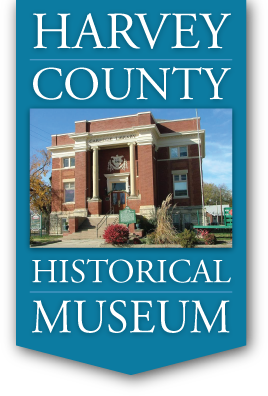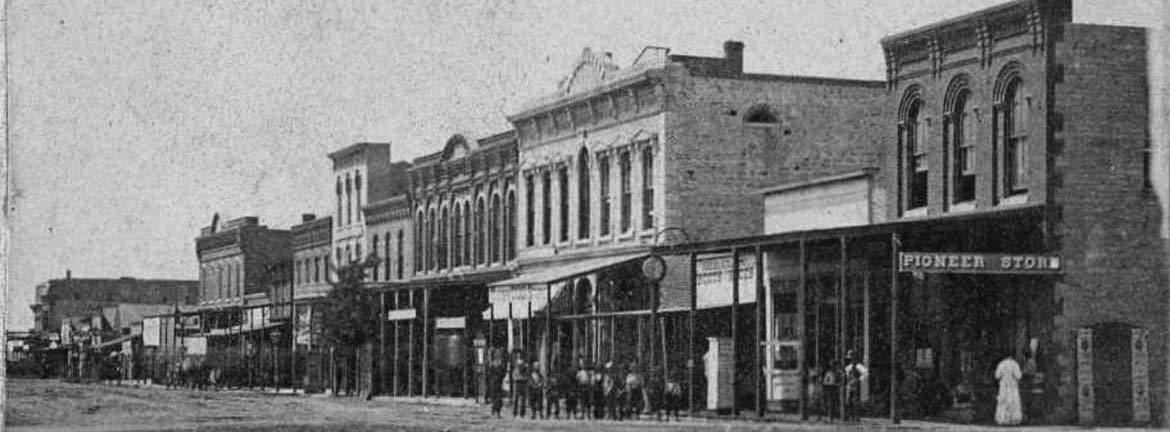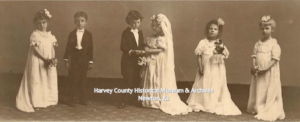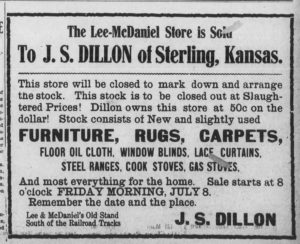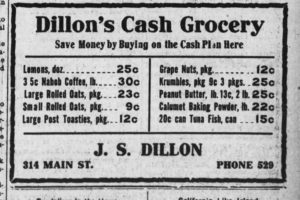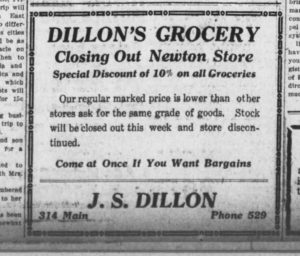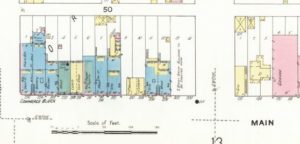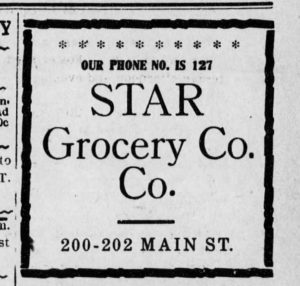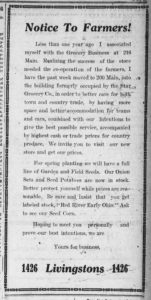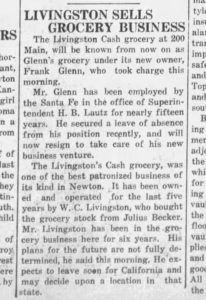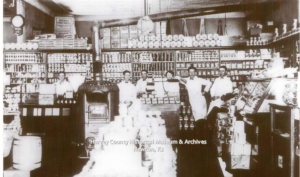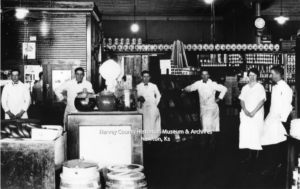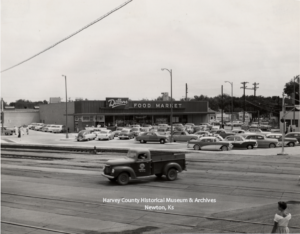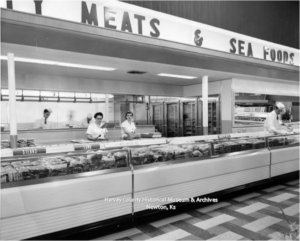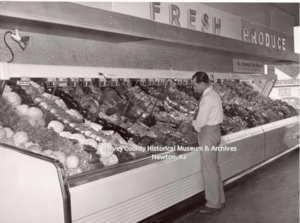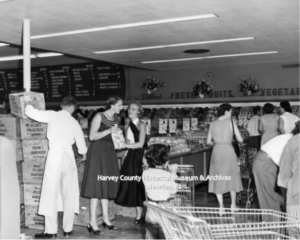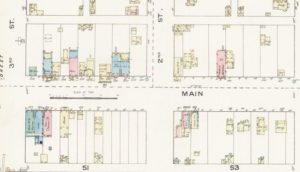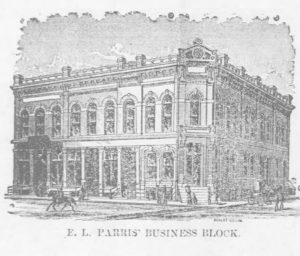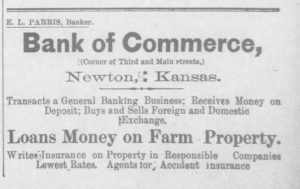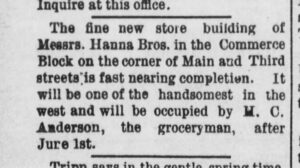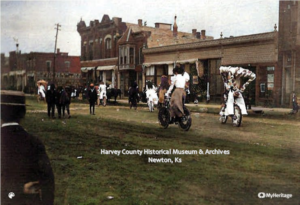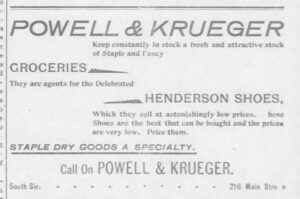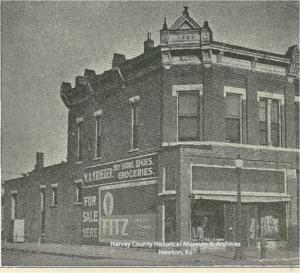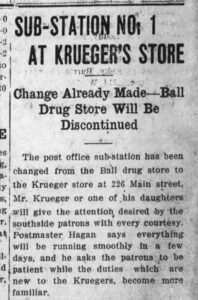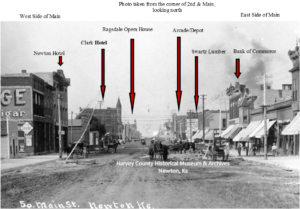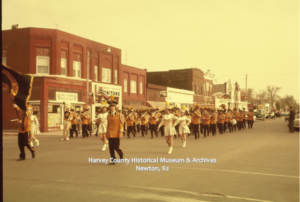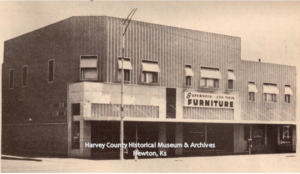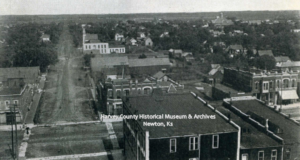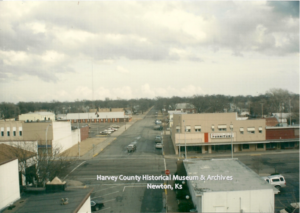by Kristine Schmucker, HCHM Curator
In 1902, seven year old Forrest Williamson, son of John & Lillie, said, “I do” to young Irene McManus in a “Tom Thumb Wedding” performance at the Newton Opera House in front of friends and family.
Tom Thumb Ceremony
The July 2 edition of Evening Kansan Republican described the event as
“one of the most enjoyable home talent performances ever presented in Newton. The actions of the little tots who appear for the first time before a large company are always interesting, but last night their performances were peculiarly amusing as they attempted to ape the manner of their elders.”
Guests were escorted by the“gallant ushers.” The “old maids (Hazel St. John, Mable Cobb and Marguerite Fritz) separately and singly, each exhibiting some eccentricity which literally ‘brought down the house.’ One found it necessary to stop just before she stepped up on the stage, remove a hand glass, and arrange her bangs. Another carried with her through the ceremony and fondled now and then her pet cat.”
The wedding party consisted of bride’s maids, Gladys Duff and Grace Reed with Yuarda O’Rourke who “tripped lightly before the bride carrying the ring.”
Next the bride, escorted by her father, “was a veritable picture of childish beauty.”
The ceremony took place on the stage “quickly performed by the minister, and the groom placing the ring on the bride’s finger” during which “the bride’s mother shed copious tears.”
Friends and relatives “crowded up to offer congratulations . . . the old maids gave the bride a frigid handshake.”
Throughout the performance “each of the little ones seemed to understand the character he was to impersonate and acted it out well.”
Following the wedding supper and a closing by A.J. Duff, the Evening Kansan Republican editor noted: “A better pleased audience never filed out of the opera house.”
Tom Thumb Weddings
Tom Thumb weddings became popular after the 1863 marriage of an ultra-diminutive 19th century actor, Charles Stratton — whose stage name was Gen. Tom Thumb – to super-tiny Lavinia Warren in New York. Stratton was a national celebrity for his performances in a P.T. Barnum sideshow.
The couple received wedding presents from wealthy Americans, including a miniature horse-drawn carriage fashioned by Tiffany & Co. Barnum sold tickets to the wedding reception. The newlyweds were invited to the White House by President Abraham Lincoln.
As a result, Tom Thumb weddings became a popular program for children. For the mock marriage, a little boy puts on a tuxedo and a little girl dons a bridal gown. They walk down the aisle together and exchange “vows.”
Churches and organization used the productions to raise money and to teach young people about formal fashion and wedding etiquette, or just for celebration’s sake.
